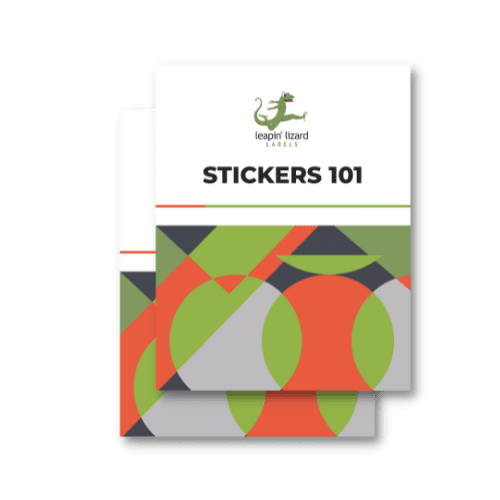There are several challenges when selecting the best material for outdoor labeling products. Designing labels for indoor use is quite easy since the environment is relatively stable.
On the other hand, preparing the design of an outdoor product label can be tricky, especially since many potential variables can take place. This is especially true since these labels will be exposed to harsh elements.
We'll discuss the top materials we use concerning outdoor labels to give you an idea of how label printing companies like us go about this issue.
Common Materials for Outdoor Labeling
Since many factors can cause problems with an outdoor product label, using the right face stock materials is essential to ensure it stays weather-resistant. These are the most common materials used today:
- High-gloss/semi-gloss paper: Both high-gloss and semi-gloss paper can be used in outdoor labels because of the protective laminate that coats its surface. Such coating allows labels with this protection to resist environmental damage, tearing, abrasion, and UV light - with the exception of offering limited water and moisture protection. The ink applied to high-gloss and semi-gloss paper labels will stay protected because its protective layer covers the print.
- Industrial vinyl: Another excellent outdoor labeling material is industrial vinyl. This material is exceptionally strong, flexible, and resistant to UV rays. Many people prefer using industrial vinyl because it can handle extreme temperatures and have a long lifespan.
- Destructible vinyl: Destructible vinyl is a material that offers several layers of protection to the product label. The extra layers make it tamper-proof since each additional surface can be challenging to remove. The only downside to this option is that it's a little less durable compared to single-layer vinyl material.
- Polyester: If you're looking for a product labeling material that can withstand high temperatures, you should consider polyester. These types of surface coating are often available in glossy or matte finishes. However, polyester isn't as UV-resistant as other materials.
- Polypropylene: Although not as durable as vinyl, polypropylene is exceptionally resistant to oils and solvents. It's also waterproof and can stand up to various elements when needed.
Tips To Make Your Outdoor Product Labels Stand Out
Now that you know the various outdoor product label materials to choose from, then the next thing you should learn is how to make your labels stand out and be noticed. Consider the following tips when labeling your products:
- Select the right images: The images you choose play an essential role in telling your brand story. Before deciding on a label design, brainstorm the images you will use for your label.
- Decide on the ideal color scheme: When choosing colors, make sure you do your research beforehand. This is especially because colors can influence moods and feelings. For instance, red often depicts confidence and strength, while orange and yellow are more playful and cheerful.
- Ensure quality imaging: Be sure that the digital artwork for your product labels has a good resolution, based on your printing approach.
- Focus on readability: Another tip to consider is the readability of your product labels. You want to ensure that your text isn't only legible and has the appropriate font size so that people can read it from a reasonable distance away.
- Leverage white space: White space plays a crucial role in designing outdoor product labels since it helps separate the information and makes it easier to comprehend. It also lets you create visual distinction, which you should leverage to make a statement.
- Consider typographic pairing: Typographic pairing is all about showing people the connection between the product details and its various options. For instance, you can use fonts that show resilience for a hot sauce.
- Be original: Just like the tip on imagery, you should ensure that your product labels' overall design is unique to your brand. They should convey your message while not looking like other products within their category. You want an original product label design that people can easily recognize as soon as they see it.
Conclusion
There is a wide range of product labeling materials available for outdoor use. Some top options are high-gloss/semi-gloss paper, industrial vinyl, polyester, and polypropylene.
When deciding on the labeling material for your products, you want to choose one that can withstand the various elements of the outdoors. Deciding on the wrong material can easily lead to issues for your items later on.
As for making your labels stand out, some of the best tips include choosing the right color scheme and imagery. You should also think about leveraging white space since this can add visual distinction to your designs while providing an impression of confidence.
Following the tips provided in this post, you should have a good idea of how to design the labels for your outdoor products moving forward. Want to see what we have to offer? Fill out our form for Your Free Quote!





